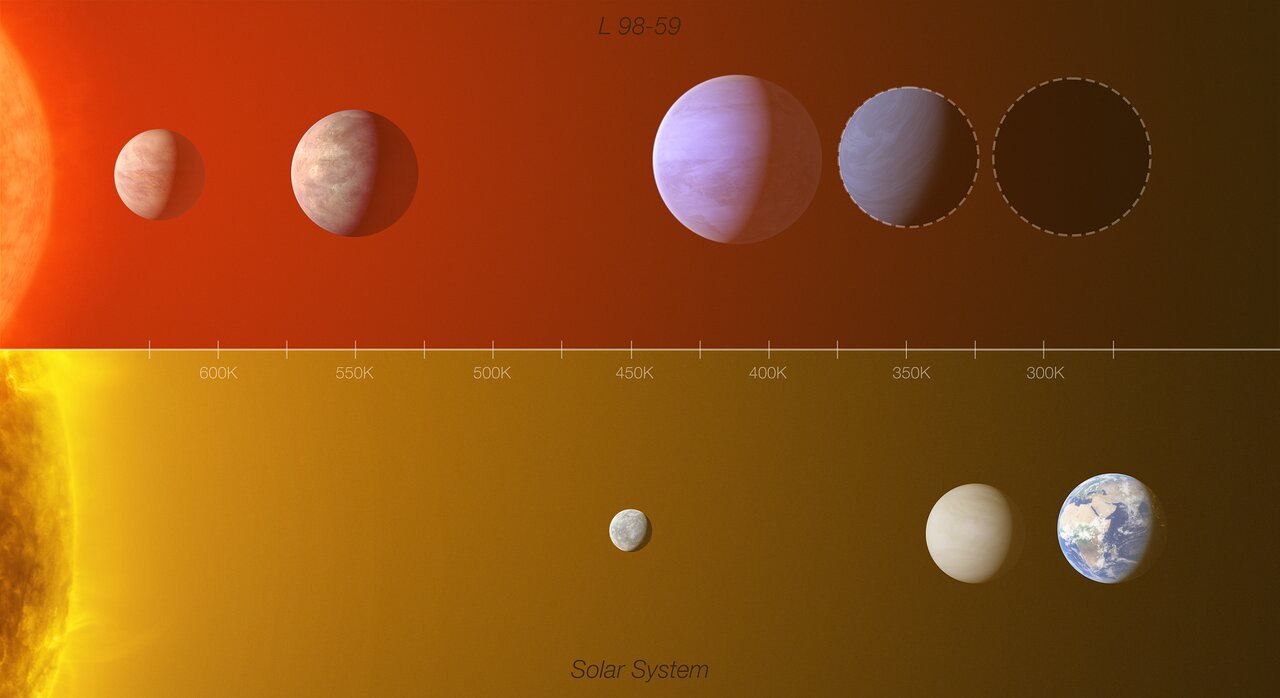Interesting planetary system in our neighborhood
At a distance of 34 light-years, the red dwarf L98-59 belongs to the closer neighborhood of the solar system. The fact that three rocky planets orbit it was discovered two years ago by the planet hunter TESS. The three inner planets are relatively close to their parent star. It is probably too warm there for life. The innermost planet is only about half the size of our Venus and thus one of the smallest planets discovered so far. Technically, it is easier to find large and heavy planets than small and light ones, so the true distribution of planet sizes is not really known until today.
Using the European Southern Observatory’s ESO Very Large Telescope, a team of astronomers has now managed to find that three of the planets may contain water in their interiors or atmospheres. The two planets in the L 98-59 system closest to the star are likely dry but could contain small amounts of water, while the third planet could be up to 30% water, making it a water world.
In addition, the team discovered new exoplanets not previously sighted in this planetary system. A fourth planet was definitely detected. In addition, there are indications for the existence of a fifth. This one would be particularly interesting because it is just the right distance from the star for liquid water to exist on its surface. “We have evidence for the presence of an Earth-like planet in the habitable zone of this system,” explains Olivier Demangeon, a researcher at the Instituto de Astrofísica e Ciências do Espaço at the University of Porto in Portugal and lead author of the new paper.

